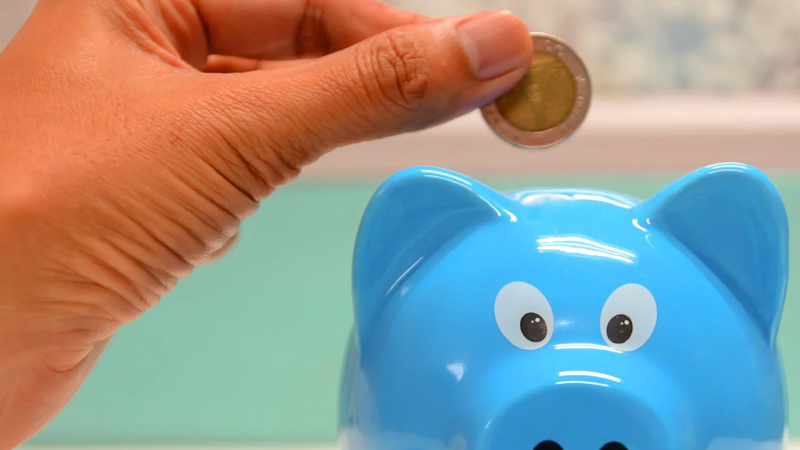TOT ODP/SWP CR MEMO: What Does It Mean?

If you’ve ever tried to get money from your account and the amount of money in your current account falls short of the money you withdrew, your account is said to have been overdrawn. Most customers notice the TOT ODP/SWP CR memo on their bank statement and start panicking while others see that memo in their bank statement and don’t even know what it means. Hence, what exactly does the TOT ODP/SWP CR memo mean?
The TOT ODP/SWP CR memo means that you have Overdrafted your account and a bank Overdraft fee has been attached to your account. This memo is attached to your bank statement to notify you of the Overdraft action and the fee that’s been deducted from your account.
It’s important for customers to figure out why this charge is attached to their bank statement whenever it is, and ways to get rid of it. In this article, I’ll give details about the TOT ODP/SWP CR memo, and how to get rid of it.
What Is The Meaning Of Tot Odp/Swp Cr Memo?

ODP is otherwise known as Overdraft protection transfer. While TOT ODP/SWP CR memo is a memo indicating the Overdraft fee attached to your account due to your Overdraft activity. When this phrase is attached to your monthly statement, this means you’ve over-drafted and you’re required to pay the extra charges incurred on the Overdraft.
The Overdraft fee is more like interest on the amount of money withdrawn during the Overdraft process and you’re required to pay the fees back with time. If an initial agreement exists between you and your bank for an Overdraft, and the amount removed from the account by you is within the authorized Overdraft limit, then interest is normally charged at the agreed rate. If the negative balance surpasses the initially agreed terms, then additional fees are charged with the application of higher interest rates.
A credit service offered by banking institutions is otherwise known as Overdraft protection. When sufficient funds are not present to cover payments, Overdraft protection settles payments made on a customer’s account.
Overdraft protection covers debit card purchases, ATM withdrawals, electronic transfers, and checks. Sometimes when non-preauthorized items such as Cheques, or ACH withdrawals are performed on the account, Overdraft protection allows for these items to be paid instead of returning them unpaid or bouncing. purchases made with a debit or check card and ATM withdrawals are considered preauthorized and must be paid by the bank whenever they’re presented, even if this creates an Overdraft.
Overdrafts could occur due to a number of reasons. These reasons may include:
- ATM Overdraft
- Intentional loan
- Temporary deposit hold
- Unexpected electronic withdrawals
- Merchant error
- Bank fees
- Returned cheque deposit
- Intentional fraud
- Bank error
- Intraday Overdraft
- Merchant Overdraft
- Authorization holds
- Playing the float
- Victimization
Any of the above reasons could cause your account to be Overdrafted therefore resulting in the attachment of the TOT ODP/SWP CR memo to your monthly bank statement.
Can You Get Rid Of This Charge?

You can get rid of the charge if the financial institution decides to be flexible with you. If you’ve maintained an awesome credit history over the years, you can cash such favors from the financial institution.
On the other hand, if you don’t have a good credit history and you’ve Overdrafted more often than normal, there’s no way you can get rid of this charge. And if you’ve Overdrafted multiple times, the bank can decide to automatically close your accounts and file a lawsuit against you.
It’s advisable to try to not Overdraft from your account so as to stay clear of paying unnecessary charges. Also, make sure to keep an account of the amount in your bank account so as to easily note when an additional fee has been charged from your account.
How To Get Rid Of This Charge?
If you have a good credit history, you can get rid of the charge by relaying your favor to the financial institution. All you have to do is to get in touch with the customer service team and request assistance. You can explain to them what caused the Overdraft and request for the fee to be eliminated.
There’s a clause to this reversal happening. If the Overdraft has only happened once or twice and you’ve maintained a good credit history, you might be eligible for the reversal of the Overdraft fee.
Although this might not be applicable to you even though you have a stable account history. The reversal is dependent on your financial institution’s terms of service. If it is applicable you could get the fee removal, if not, you’ll have to pay the Overdraft fees.
You can only expect your financial institution to be lenient a couple of times. If the Overdraft becomes a repetitive action, you’ll have to face the consequences and pay the fees.
Alternatively, when you’ve Overdrafted once and you find the fees, once you’ve spoken to the institution and they agree to reverse the fee, be aware of handy alternatives next time so as to not Overdraft your account and end up paying unnecessary charges you could have overcome at the very instant.
In addition, you can also use money loan apps instead of Overdrafting your account. There are tons of money loan apps that provide short-term loans to customers to help them deal with their financial emergencies. For example, Cash App allows Cash App users to opt for a loan with easy and flexible terms.
Finally, you can get rid of paying these charges by seeking financial support from your family and friends instead of Overdrafting your account. This is the best and interest-free way to get quick funds to settle emergency situations.
